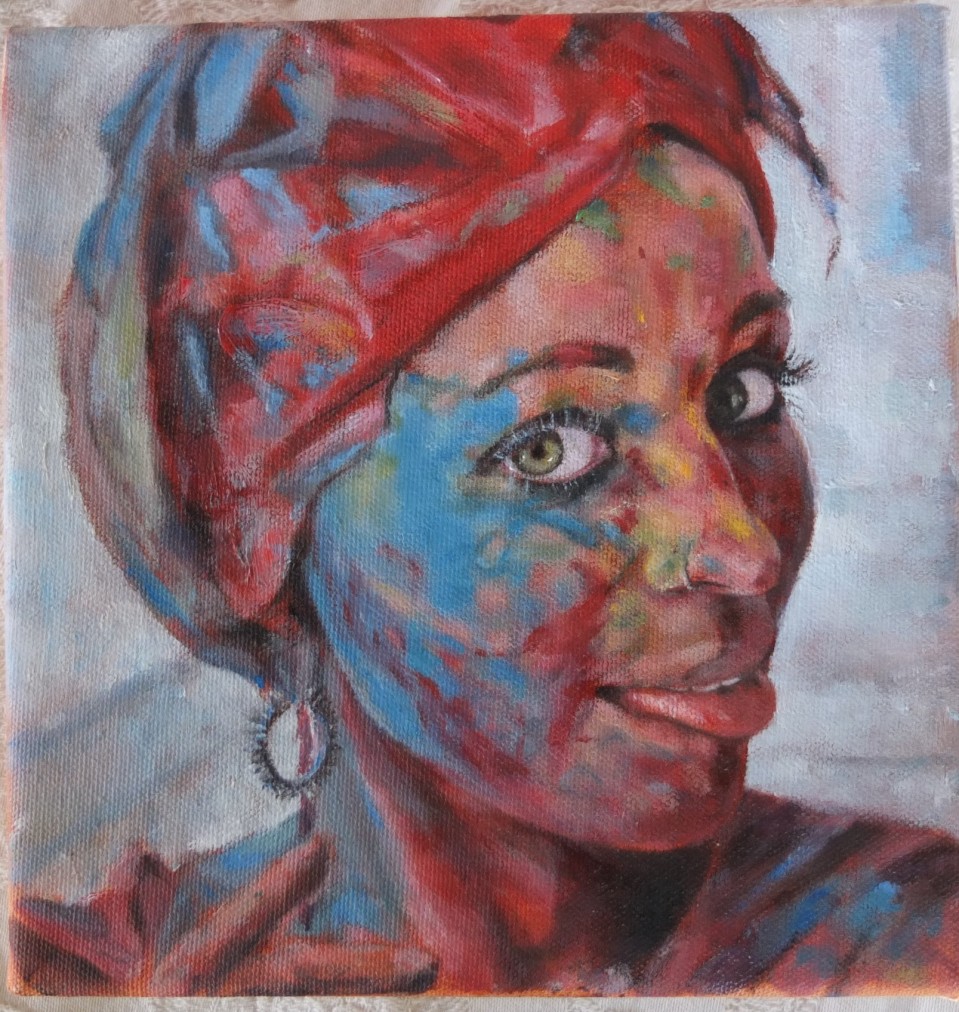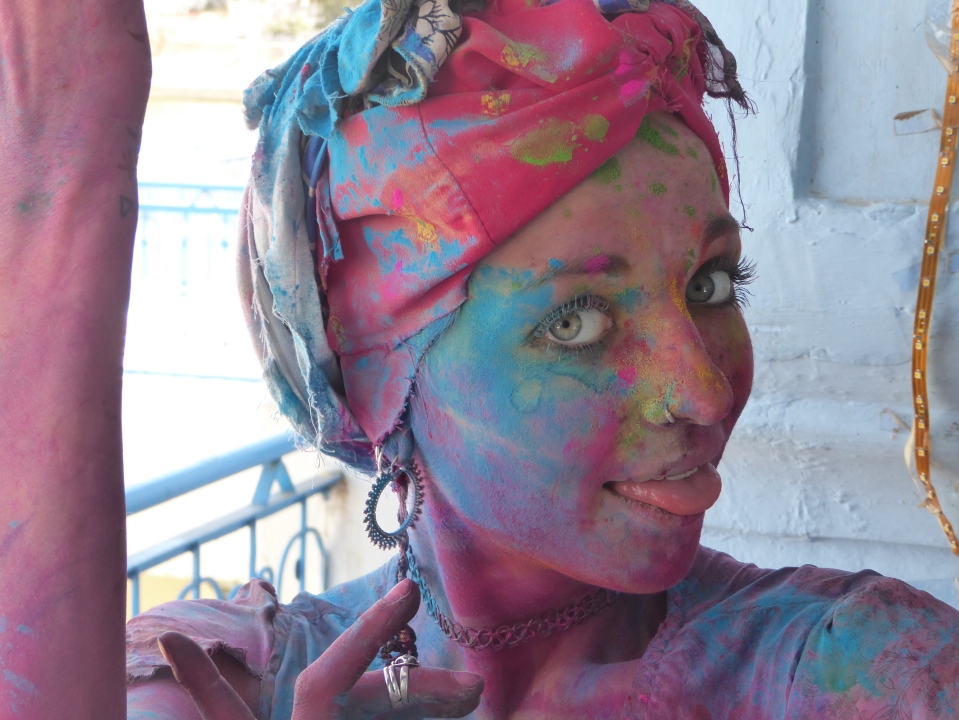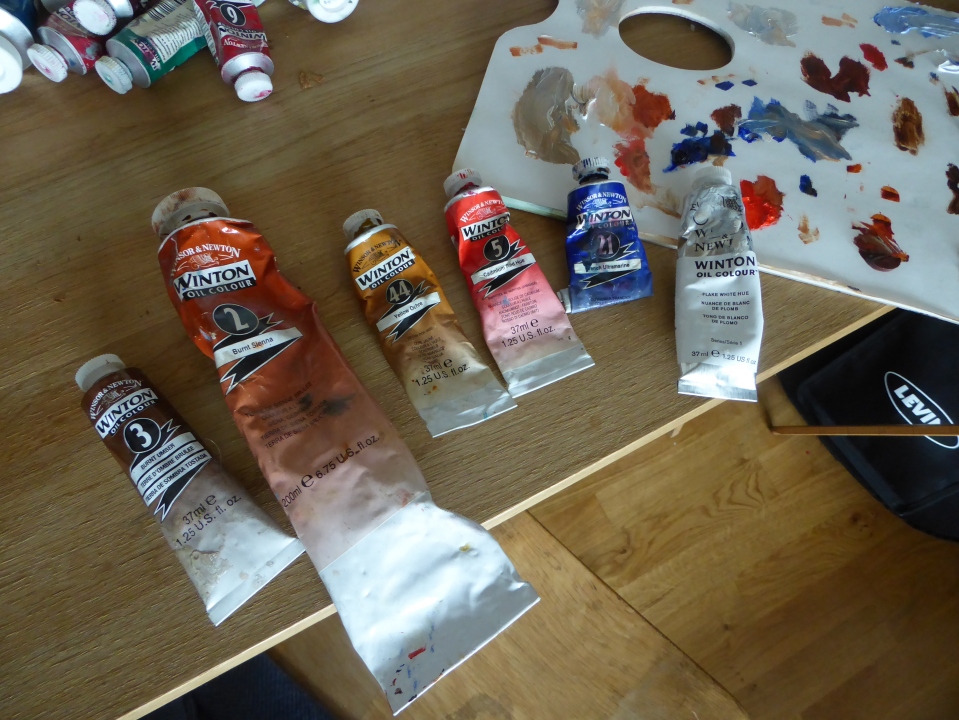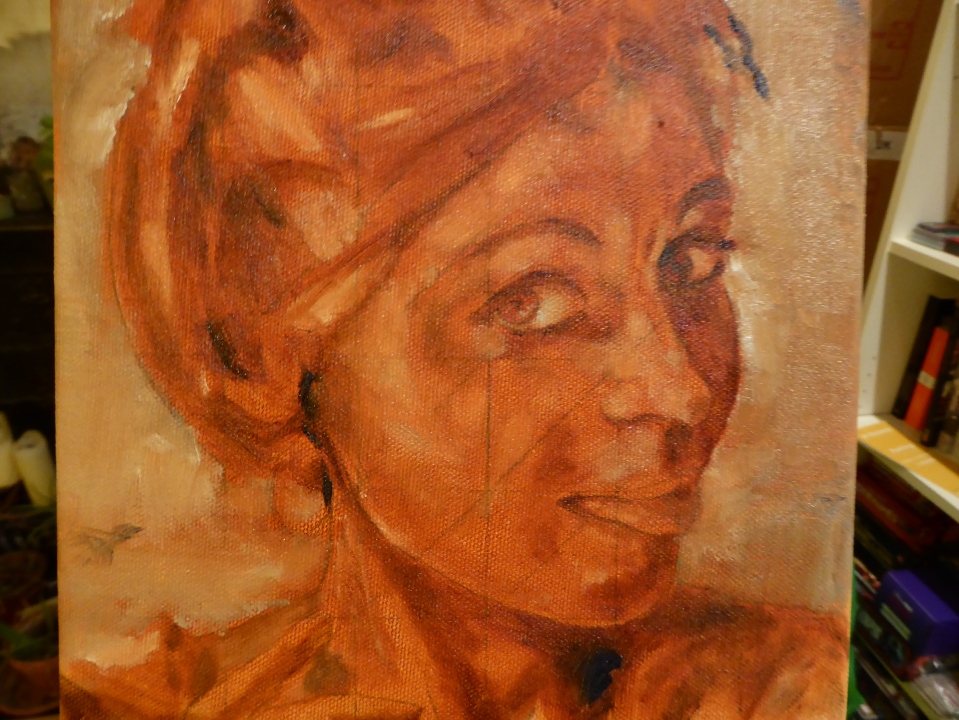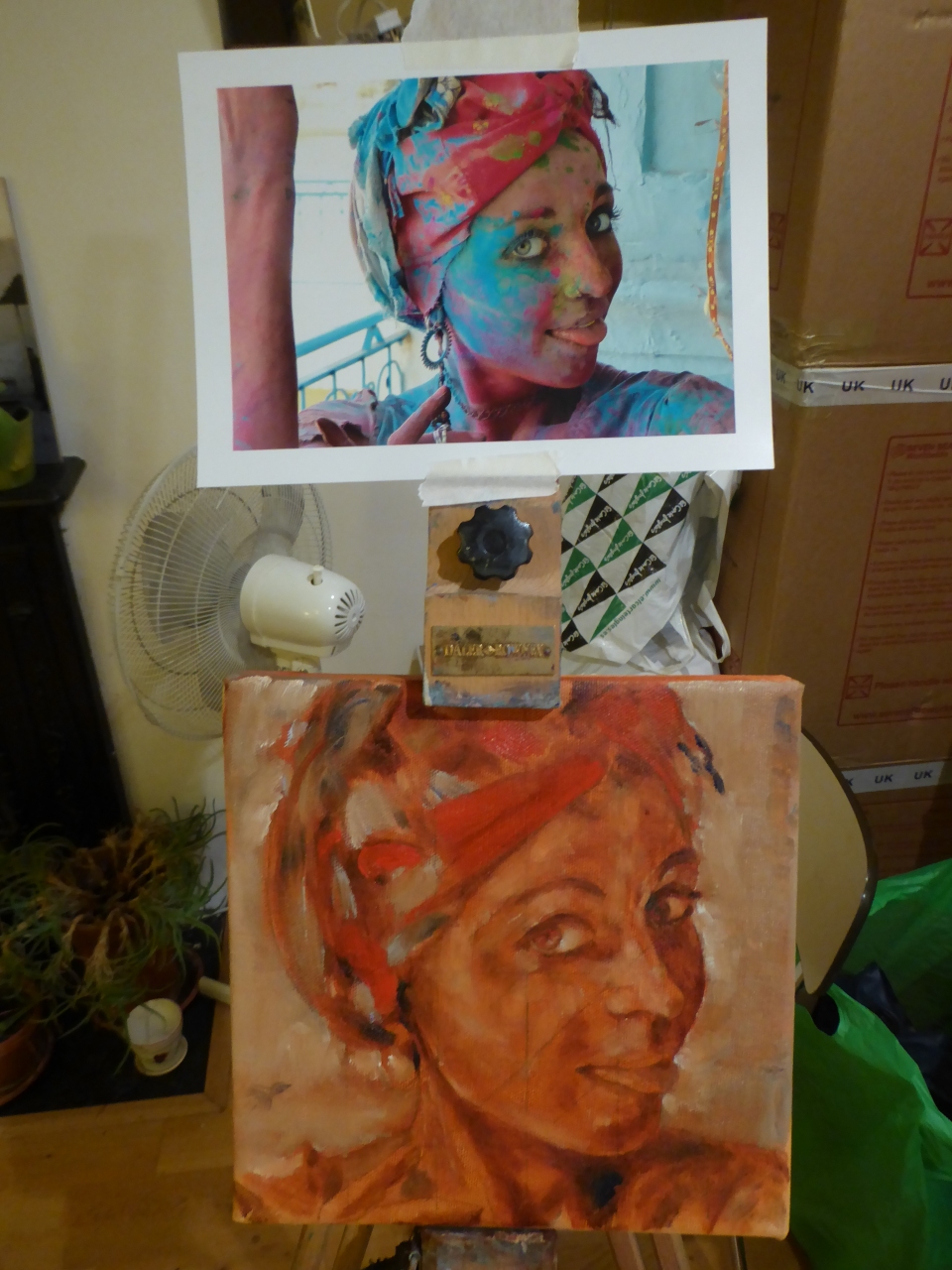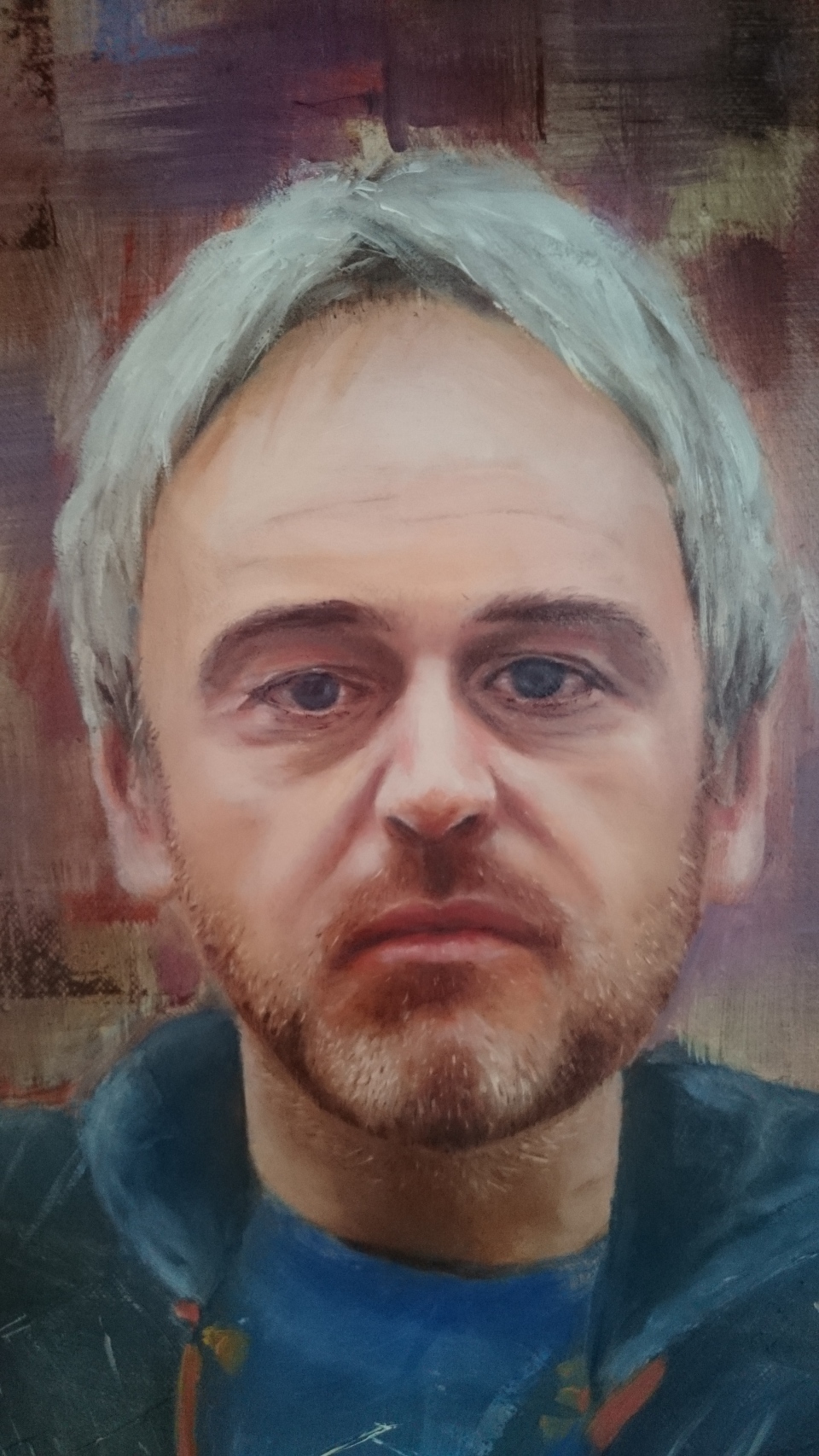I tell myself I’m going to paint today.
I am absolutely going to paint today.
I’ve woken late, and why not. It’s been a long week (isn’t it always) and I am just going to let myself chill out for a bit. I make coffee and pad around in my pyjamas. Side note – when my slippers were new my feet felt like they were floating on cosy clouds. They don’t feel like that anymore. Still warm, they have nevertheless lost some kind of quintessential magic, which I now miss a little bit.
I eat cereal and check my emails. Nothing much going on. In the background the painting is looking hopefully in my direction. I watch an episode of Parks and Recreation and I take a shower. I’m going to start painting as soon as I am dressed.
Louise texts me asking if I want to meet for coffee in Broadway Market. That sounds good. I should get some fresh air anyway. I put on my big coat and head out. We sit on a bench in London Fields with our cardboard cups of coffee, dog-spotting (one of the best things in life short of actually having a dog), then we browse some arty bookshops, and then we walk to Columbia Road flower market where I buy an orchid for £2 (possibly the greatest bargain ever). It starts to rain so we go for a pint and we a stay in the pub as the rain gets heavier and the afternoon stretches out into evening and Lou’s flatmate Hubie joins us. Then we pick up pizzas and we watch TV at their place and I roll home shortly before midnight.
An undeniably lovely day.
But I didn’t paint.
I come back to it the next afternoon. I’m not really feeling it, to be honest. I think I’m coming down with a cold, and I am tired and listless, and I don’t really know what to do next with the painting. I should do something though. After all, did I not just write a whole (very public) blog entry about getting on with it? I did. So I do.
The last couple of paintings I did in 2014 I was trying out glazes. You thin the paint down with a mix of Linseed oil and turpentine until it has a runny, watery consistency, then you apply that to the surface of the painting. Because it is so thin, it does not obscure the paint beneath, but rather creates a tint. You can slowly build up layers of glaze to create all kinds of delicate richness.
I’m not in the mood for that today, though. It’s just too precious and meek. Anyway, looking again at the photograph, all that loud colour suggests a more direct approach, for now at least. I may come back to glazing later on.
So I just keep going with the approach I have already taken so far, except I want to increase the contrast and start giving the painting more body. I don’t start anywhere in particular, just little dabs of paint here and there. Earlier on I was wary of introducing the Holi colours too early as I didn’t want the ‘map’ of values to get lost, but it’s beginning to feel like I won’t get very far without something. I don’t really understand how these colours are going to work – they are out of the range of my palette and I am actually a little nervous about using them. Still, they are very much a feature in what I am trying to portray, so I should just get on with it. I start gingerly working in some subdued ultramarine blue. The world doesn’t end, so I start making bolder moves with a wider range of colours – nothing too big, but enough to feel like I’m not tiptoeing around.
I’m never quite sure when to begin focusing on detail. In the underpainting I have a bit of a system, but once I get to this ‘middle-game’ things are a lot more fluid. I might go into detail in one area for a while but leave another untouched. Constant tweaks and revisions, trying to keep things in balance, trying to track down the elusive things that identify the image with the subject.
I want to do something with the eyes. They aren’t the brightest thing in the image, but they’re definitely the focal point, and they seem like a good place to start. I find an approximation of the greenish hue of the pupils, somewhere between Ultramarine, Yellow Ochre and White, and spend a few minutes going into a fair amount of detail. It’s not definitive and I will certainly need to do some refining, but it gives me a chance to get to grips a little with this thing. Looking at the ‘whites’ of the eyes, it’s hard to figure out what colour they really are. Certainly it’s not white. I mix up something a little less brilliant (a sort of pinkish grey) and try it out. It’s okay. Still too bright, probably, but putting this in makes me consider the shape of the eye, and the colours and tones surrounding it. The eye on the left (her right) looks huge, but I’m not worried about that really – I have plenty of time to refine things.
Painting this detail highlights the need to make other changes, to balance things out. In some ways it’s like the painting is constantly telling you where it needs to go. A bit of light on the cheek makes the nose look too flat, so you go there. Then the forehead looks to be in shadow, and so on. This can be useful and productive, but too much chasing around and the painting can spiral out of control. It’s essential to look, always, at the source image, and to keep stepping away from the canvas to view it from a distance. It helps me keep perspective.
I lose a few days to the rest of what constitutes life and when I come back I have to spend a while just looking at the painting, trying to figure out how to get back into it, and what should come next. I notice she is looking pretty orange; like the victim of a terrible accident in a tanning salon, in fact. Most of what is on the canvas at this point is still the sienna underpainting, so that’s not surprising, but rather than just continuing to add little dabs of colour here and there, I decide it’s time to apply a glaze. I want to cool the sienna down, and start to brighten things, so I use Yellow Ochre. Diluting it with glaze medium (which dries faster than just linseed and turpentine), I paint this loosely over most of the face, then use a dry brush to work it in and a dry cloth to take it away where it makes no sense or I’m just not keen. This doesn’t take long, and it’s not a profound change but it gives me something new to start working into, and it helps the canvas to accept the introduction of new paint; if that makes sense…
The ochre looks a little sickly and pallid, so I do the same thing with Cadmium Red. Application of these transparent layers of colour start to create the sense of something approaching skin. After that it’s back to the incremental application of little daubs of opaque paint; two steps forward and one back, through the next couple of weeks, as I start building the whole thing up, and bringing in the splashes of bright colour that cover large parts of her face.
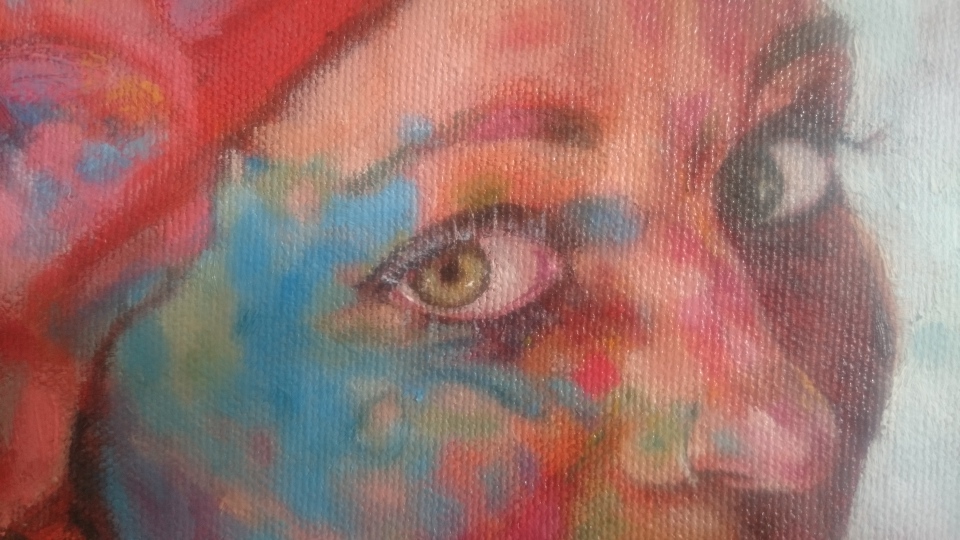
Sometimes I paint for an hour and it is hard to discern any real difference. Maybe I am still being too timid. Or I do make progress, but then over a day or two the drying process takes away some of the clarity and focus the piece has when the paint is fresh, probably because I am trying to apply detail onto a surface that has not dried sufficiently. But I remind myself frequently that I am still learning, still little more than a beginner in this world; and there is so much to learn. And gradually she takes shape until I think she’s just about finished, or at least I am happy with the extent to which she remains unfinished.
Knowing when to stop is difficult. There is always something that could be improved or developed, but at the same time I don’t want to overwork and tweak and worry the life out of the painting. Eventually I put down the brushes and I just tell myself I am finished for now. I can always come back later on if I feel the need, but hopefully by then I’ll have moved on to some other piece.
It’s been so nice to get back into painting after such a long break. I have re-learnt a lot of things I had forgotten, and picked up some other bits I hadn’t figured out before. Hopefully the next one will be another progression, but for now I am pretty happy.
